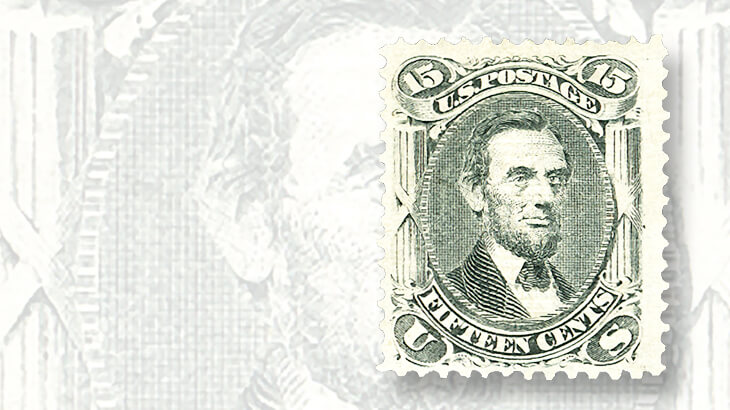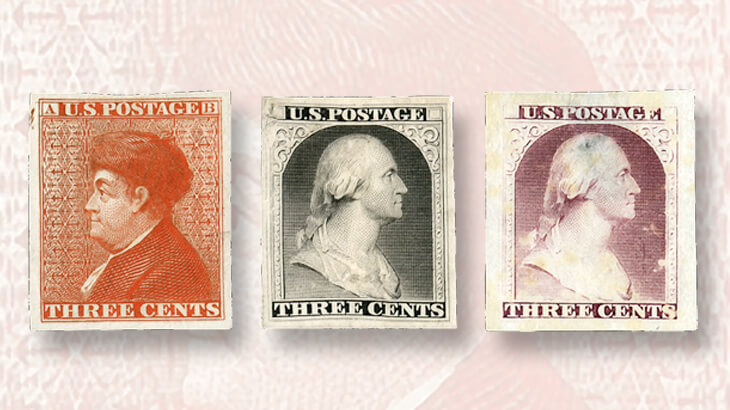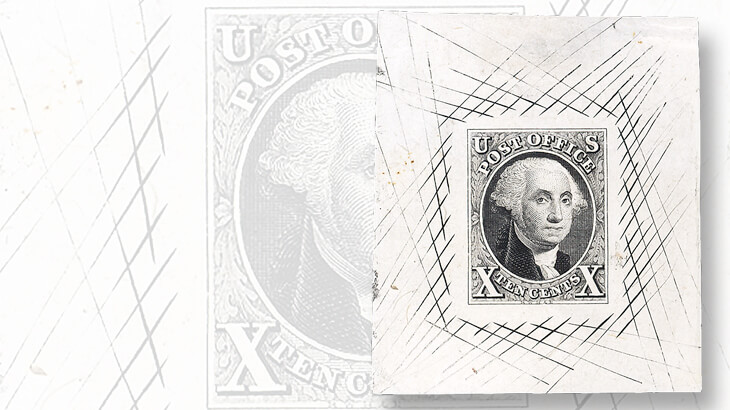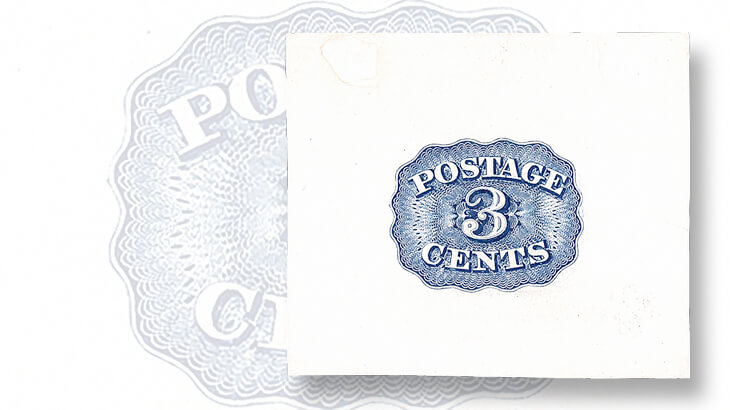US Stamps
Cherrystone sales offer affordable 19th century proofs, essays
By Matthew Healey, New York Correspondent
With fewer of the big-dollar sales of United States stamps in recent weeks, we can turn instead to some interesting smaller-dollar items.
Cherrystone Auctions held sales of U.S. and worldwide stamps in New York on Jan. 12-13 and again on Feb. 23-24. Both sales offered ranges of proofs and essays of 19th-century stamps at comparatively affordable price levels.
One lot in January comprised three unaccepted stamp designs dating from the early 1850s, starting with an orange 3¢ Benjamin Franklin design modeled on Great Britain’s Penny Black and printed on India paper (Scott 11-E3c).
A profile of Franklin, the first American postmaster general, in his trademark beaver-pelt hat, is set against an intricate, machine-turned background pattern with “U.S. Postage” above and “Three Cents” below. The design, thought to have been produced by Gavit & Co. of Albany, N.Y., includes the check-letters “A” and “B” in the upper corners, a nod to the British method of deterring fraud by using corner letters to make every stamp in a sheet different.
Connect with Linn's Stamp News:
Like us on Facebook
Follow us on Twitter
Keep up with us on Instagram
Two other essays in the lot showed George Washington in an ornate, arched frame, with the same lettering as the Franklin design, in black on India paper sunk on card, and in red-violet on India paper (Scott 11-E4a and 11-E4b, respectively).
The trio sold for $264.50, including the 15 percent buyer’s premium Cherrystone adds to all lots. Several other lots of early U.S. essays went for similar amounts.
The January sale also included an unused, original-gum 15¢ Abraham Lincoln stamp of 1867, with an E grill impressed into the paper as an experimental way of preventing reuse (Scott 91). Fresh and reasonably well centered, it brought $8,625.
Cherrystone’s February sale offered a large die proof of the 1847 10¢ George Washington stamp on white laid paper, with full cross-hatching around the stamp (Scott 2P1c).
These striking diagonal lines, arrayed unevenly in the manner of a very bad haircut, were likely applied to allow excess ink to move away from the vignette, producing a cleaner impression of the die. Often, these proofs are cut down, reducing or removing the cross-hatching. The intact one offered by Cherrystone sold for $690.
A group of four essays tried out a handsome numeral design, with the words “Postage 3 cents” against a complex, machine-turned background, in black, dark brown, scarlet, and blue on white glazed paper (Scott 11-E15c).
These essays were produced by the banknote-engraving firm of Bald, Cousland & Co., of New York and Philadelphia, possibly when the firm was competing for a contract to print postage stamps. The lot sold for $2,645.
MORE RELATED ARTICLES
Headlines
-
US Stamps
Oct 7, 2024, 3 PMMcMurtrie dismissed as APS education director following Sept. 21 arrest
-
US Stamps
Oct 7, 2024, 12 PMVasiliauskas named president of Mystic Stamp Co.
-
US Stamps
Oct 6, 2024, 5 PMApgar souvenir card available
-
US Stamps
Oct 6, 2024, 4 PMFirst Continental Congress and U.N. stamps receive Scott catalog numbers









